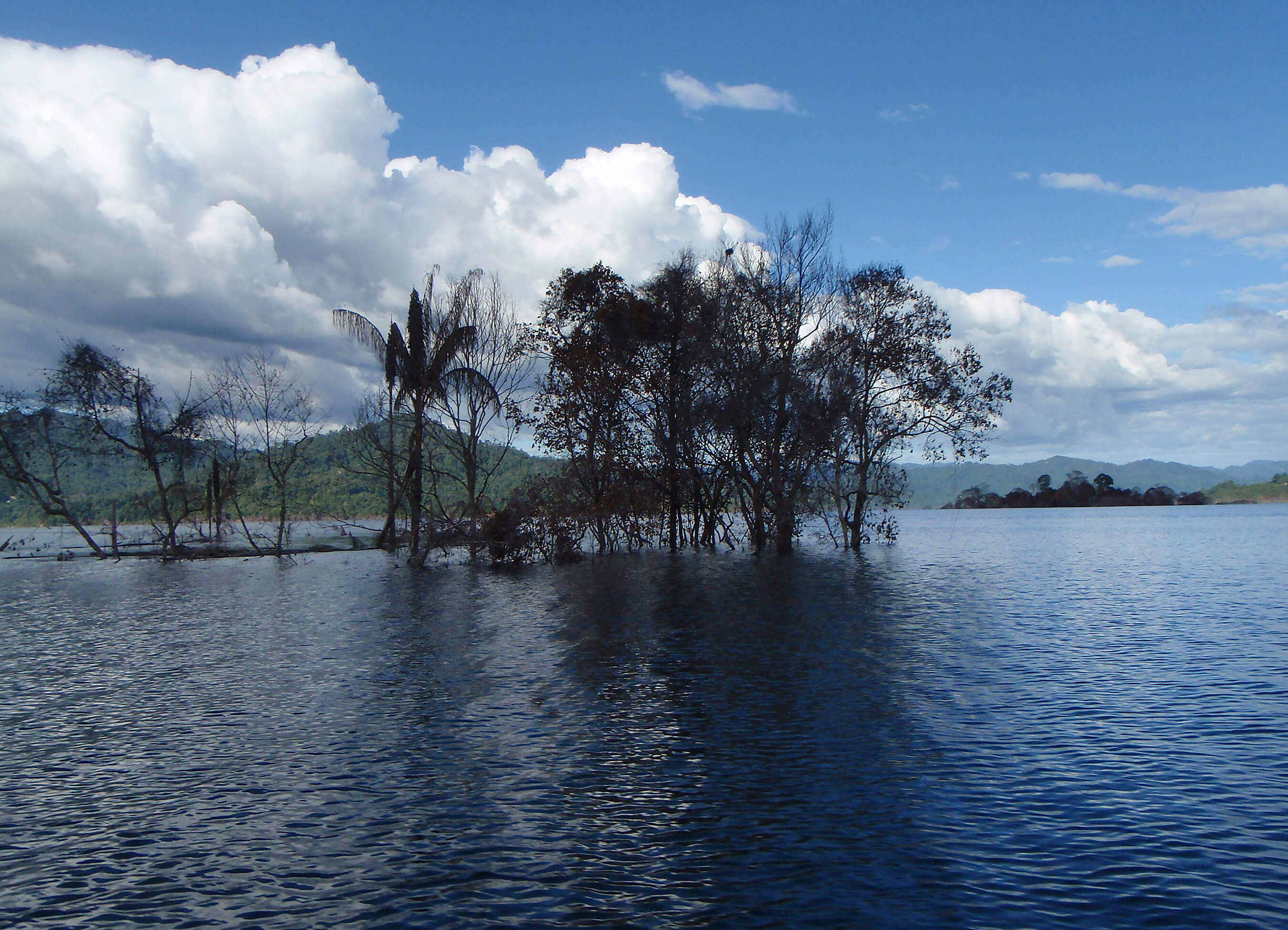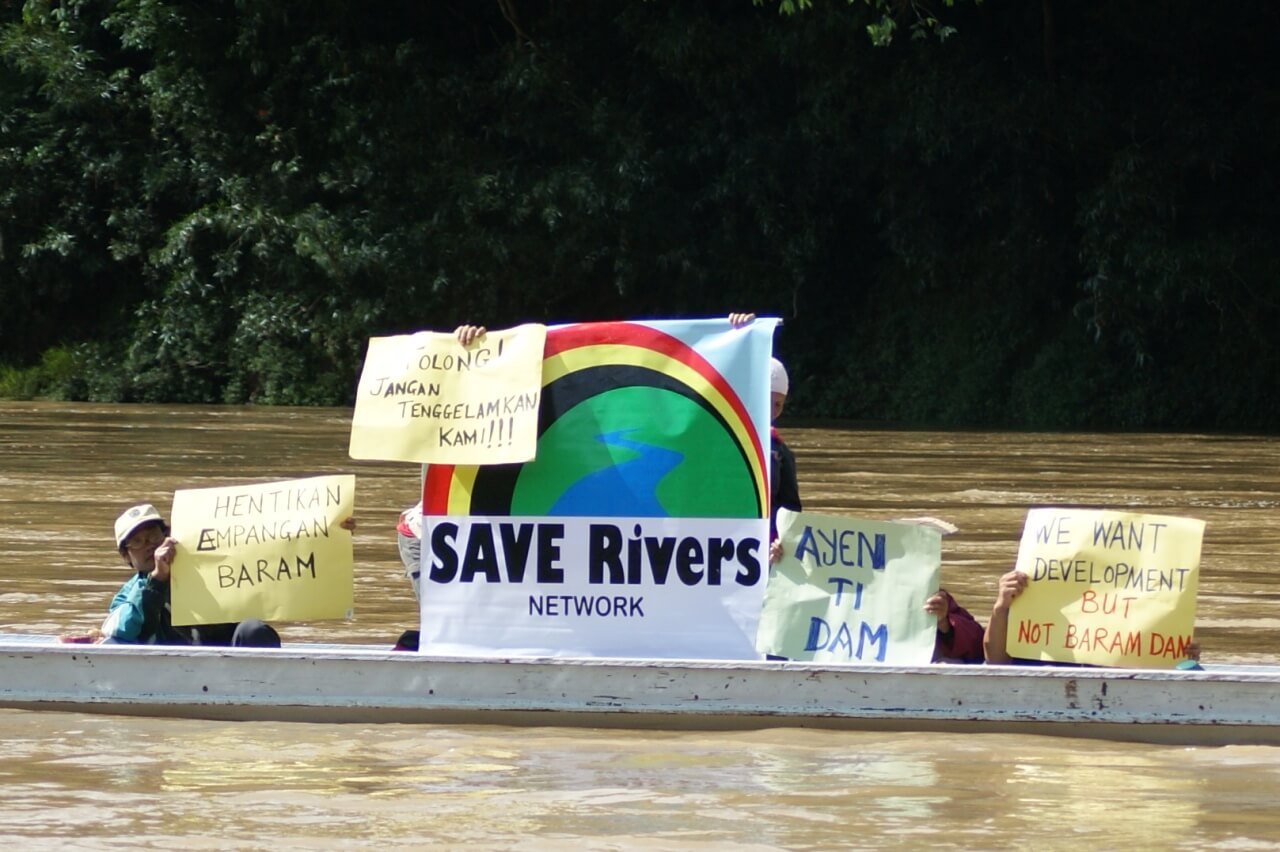
Renewable power sources instead of hydroelectric dams
In 2008, it emerged that the Sarawak government was intending to build a series of twelve dams in the rainforest. Thanks to the untiring campaigning of the Bruno Manser Fund and its local partner organisations, it proved possible, in 2016, to put a stop to the construction of the most hotly disputed dam, the Baram Dam. The Bruno Manser Fund was able to set a number of further developments in motion, and hence the electricity utility Sarawak Energy has now adopted an alternative energy strategy with the focus on rural electrification. Unfortunately, the Baleh dam is now being built. Whether further dams are constructed after this will depend on the amount of public pressure exerted.
Gigantism and corruption
In 2008, it became
known that Sarawak’s government had developed plans for twelve – and over the
long term up to fifty dams – keeping the public out of the whole process. While
the installed power in Sarawak amounted to 1200 megawatts in 2009, these fifty
dams would have the capacity to generate 20,000 megawatts of electricity. The
Bakun Dam, with a rating of 2400 megawatts went on stream in 2011 already, as
one of the biggest dams in Asia. The Murum dam, completed in 2016 has a rating
of 944 megawatts.
The dams were intended to power an enormous industrialisation programme known
as SCORE, Sarawak Corridor of Renewable Energy. The government was dreaming of
massive industrial projects, such as aluminium smelting works, which are health
hazards. Some 105 billion US dollars were to be invested in SCORE up to 2030 –
making it the most ambitious and most expensive energy project in the whole of
Southeast Asia.
Our research has shown that the family around Sarawak’s Governor and former head of government, Taib, is benefiting directly from the dams. The Taib family has holdings in companies that have received contracts from Sarawak Energy for the construction of power lines and settlements for populations displaced by the dams. One of Taib’s companies even has a virtual monopoly in cement. Companies belonging to him are also investing in smelting works and are building new roads for SCORE. The Bakun Dam has been labelled a "Monument of Corruption" by Transparency International.
Success through resistance
The indigenous peoples of Sarawak have learnt what dams mean for them: the loss of their land, their culture and their identity, followed by a life with no prospects. The Bakun Dam not only led to the flooding of nearly 700 square kilometres of rainforest but also caused 10 000 indigenous inhabitants to be driven away from their homes at the end of the 1990s. The Murum Dam has swallowed up 250 square kilometres of rainforest and forced 1400 indigenous inhabitants to resettle.
The indigenous
inhabitants along the Baram river put up resistance to their forced
resettlement and organised protests against the Baram dam, which would have
affected up to 20,000 indigenous inhabitants and 400km² of rainforest. Together
with other inhabitants affected by the dam, they founded SAVE Rivers in 2011 as
a network for fighting the plans for dams in Sarawak. The Bruno Manser Fund has
provided support since then for local protests, petitions, court cases and, in
particular, the blockades staged as of 2013 with the aim of preventing
construction of the dams. The Renewable &
Appropriate Energy Laboratory at the University of California, Berkeley
drew up a new, alternative energy strategy based on rural electrification.
The resistance put up by those affected and the new energy vision finally won over the then head of government, Adenan Satem. In 2015, he issued a moratorium on the Baram Dam and, at the start of 2016, he buried the megaproject and returned the expropriated land to the indigenous inhabitants.
Renewable power in the tropical forest
Under the motto #MicroNotMega, the Bruno Manser Fund and SAVE Rivers are now committed to micro hydro power plants and solar energy. In this way, remote villages can obtain sustainable electricity. Mega-dams, by contrast, only serve big industry. Under pressure, the government of Sarawak followed the call for rural electrification and has now set itself the goal of supplying all villages with solar power by 2025. This campaign shows that civil society can bring about a change in policy by simple means such as blockades. Instead of mega-dams, the government is currently building solar plants in the rainforest!
Further information
- Report "Sold Down the River: How Sarawak Dam Plans Compromise the Future of Malaysia's Indigenous Peoples" (2012)
- Studies conducted atthe University of California, Berkeley, on the energy policy for Sarawak and the opportunity for rural electrification
- Report entitled “No Consent toProceed” on the Baram Dam (2014)









